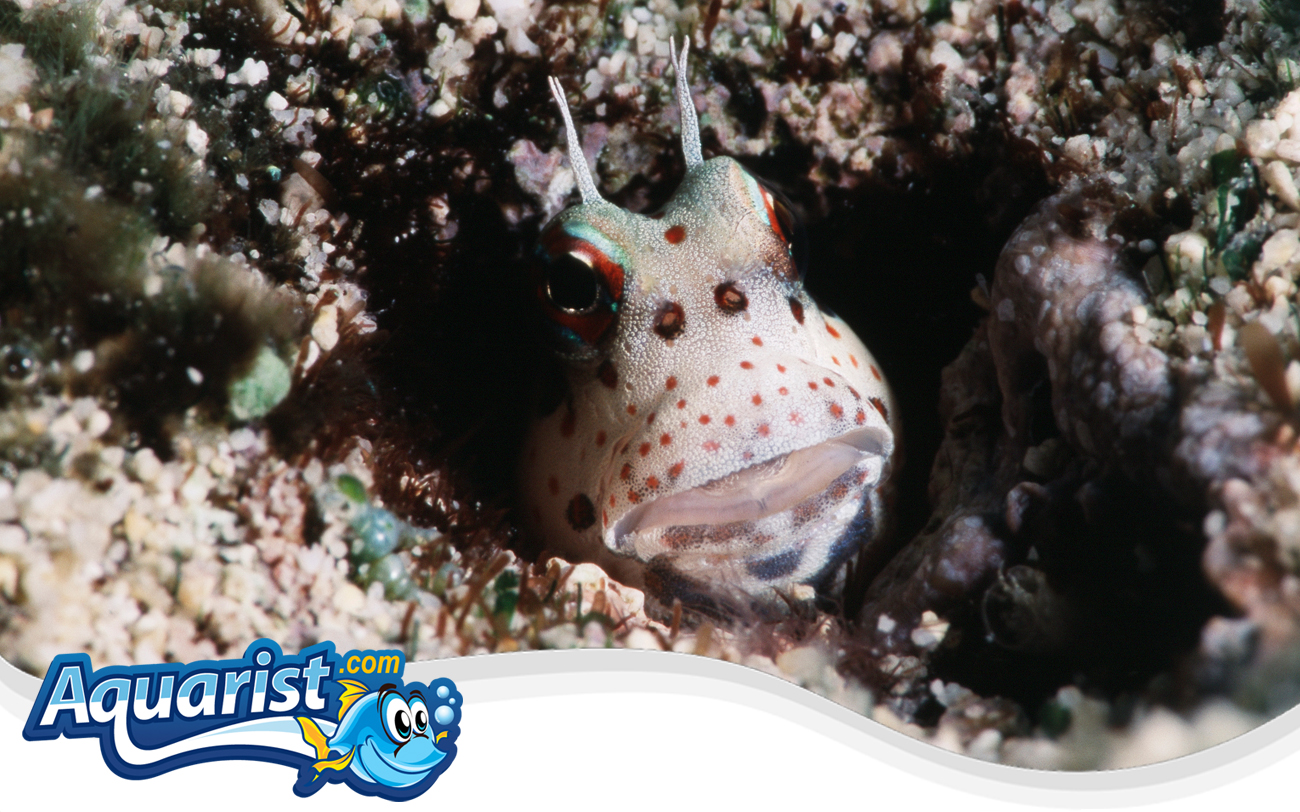Overview
- Native to shallow coastal waters and intertidal zones of the Indo-Pacific region.
- Named for the distinct golden-orange spots scattered across its body.
- Often found perched on rocks or coral structures, scanning its surroundings.
- An entertaining and active species that brings personality to a marine aquarium.
Feeding
- Primarily herbivorous, grazing on algae and biofilm growing on rocks.
- Accepts prepared foods such as seaweed sheets, algae-based pellets, and blanched vegetables.
- Providing a natural source of algae within the aquarium helps mimic its wild feeding habits.
- Frequent small meals are recommended to maintain its health and activity levels.
Habitat
- Prefers reef and rocky environments with plenty of crevices for hiding.
- Can tolerate intertidal conditions and is often seen out of the water at low tide.
- Requires an aquarium with live rock to encourage natural foraging behavior.
- Moderate water flow supports its active swimming and grazing patterns.
Fish Care
- Optimal water temperature: 75-82°F (24-28°C).
- pH level: 8.1-8.4, with a specific gravity of 1.023-1.026.
- Resilient and adaptable, but thrives best in a well-established tank.
- Requires good water quality to prevent stress-related illnesses.
Compatibility
- Generally peaceful but can become territorial towards similar-looking fish.
- Compatible with other reef-safe species such as clownfish, gobies, and wrasses.
- Avoid housing with large aggressive predators that may view it as prey.
- Does well in community aquariums when given adequate space and hiding areas.
Aquarium Behavior
- Frequently perches on rocks, observing its surroundings with quick, darting movements.
- Often engages in comical behavior, such as peeking out from crevices or "hopping" along the substrate.
- Can be curious and interactive, recognizing familiar faces over time.
- Spends much of its time grazing, contributing to algae control in the aquarium.


